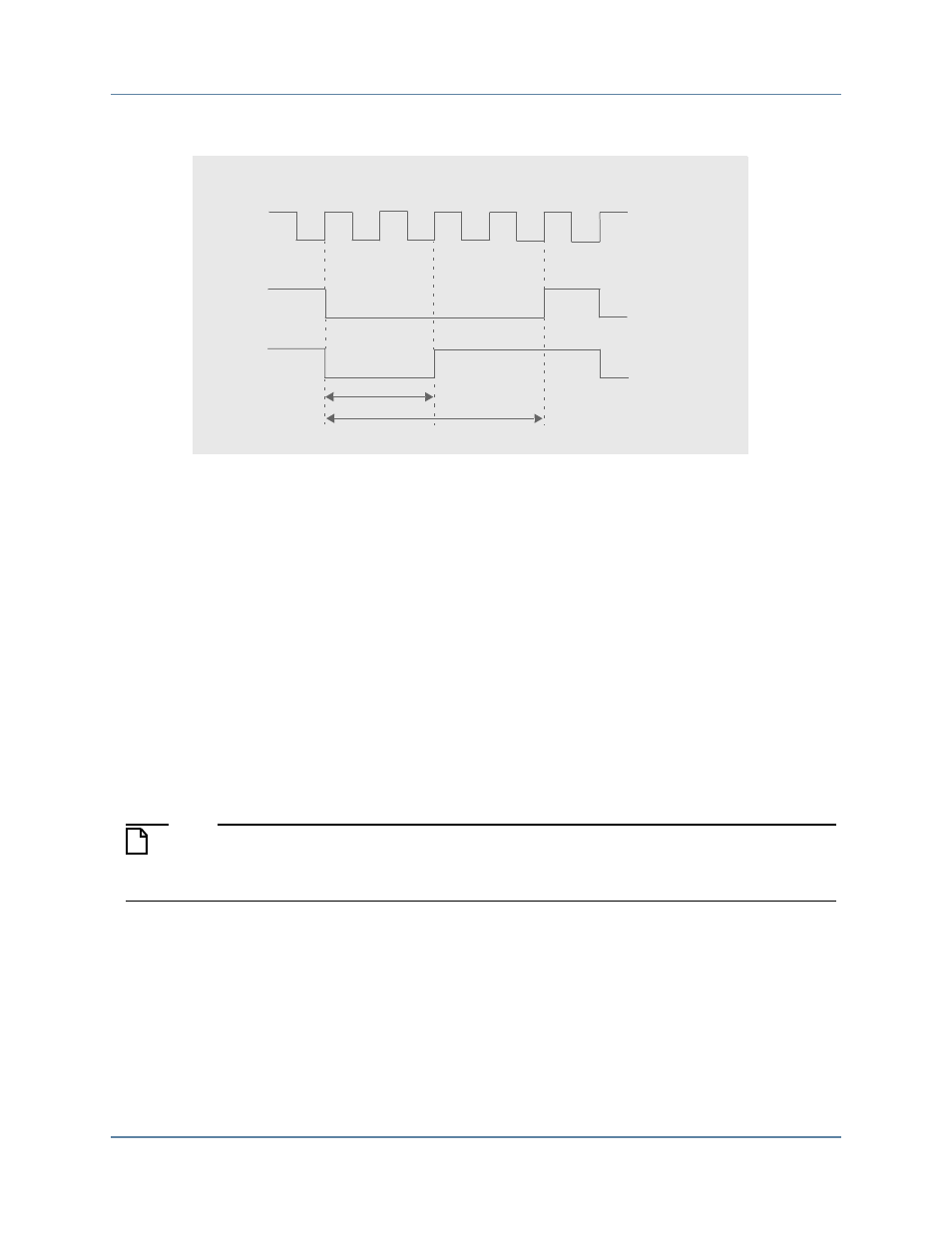Using the basic slave test program api, Example 6-16. slave_ready_delay_mode, Ready both asserted) – Altera Mentor Verification IP Altera Edition AMBA AXI4-Lite User Manual
Page 128: Figure 6-6, Shows how to achieve a *ready before *valid

Mentor Verification IP AE AXI4-Lite User Guide, V10.3
128
SystemVerilog Tutorials
Verifying a Master DUT
April 2014
Figure 6-6. slave_ready_delay_mode = AXI4_TRANS2READY
shows the configuration of the slave_ready_delay_mode to its default value.
Example 6-16. slave_ready_delay_mode
// Enum type for slave ready delay mode
// AXI4_VALID2READY - Ready delay for a phase will be applied from
// start of phase (Means from when VALID is asserted).
// AXI4_TRANS2READY - Ready delay will be applied from the end of
// previous phase. This might result in ready before
valid.
typedef enum bit
{
AXI4_VALID2READY = 1'b0,
AXI4_TRANS2READY = 1'b1
} axi4_slave_ready_delay_mode_e;
// Slave ready delay mode seclection : default it is AXI4_VALID2READY
axi4_slave_ready_delay_mode_e slave_ready_delay_mode = AXI4_VALID2READY;
Note
In addition to the previous variables and procedures, you can configure other aspects of
the AXI4-Lite Slave BFM by using the procedures
Using the Basic Slave Test Program API
There are a set of tasks and functions that you can use to create stimulus scenarios based on a
memory-model slave with a minimal amount of editing, as described in the
section.
Consider the following configurations when using the slave test program.
*VALID
*READY
ACLK
*_valid_delay = 4
*_ready_delay = 2